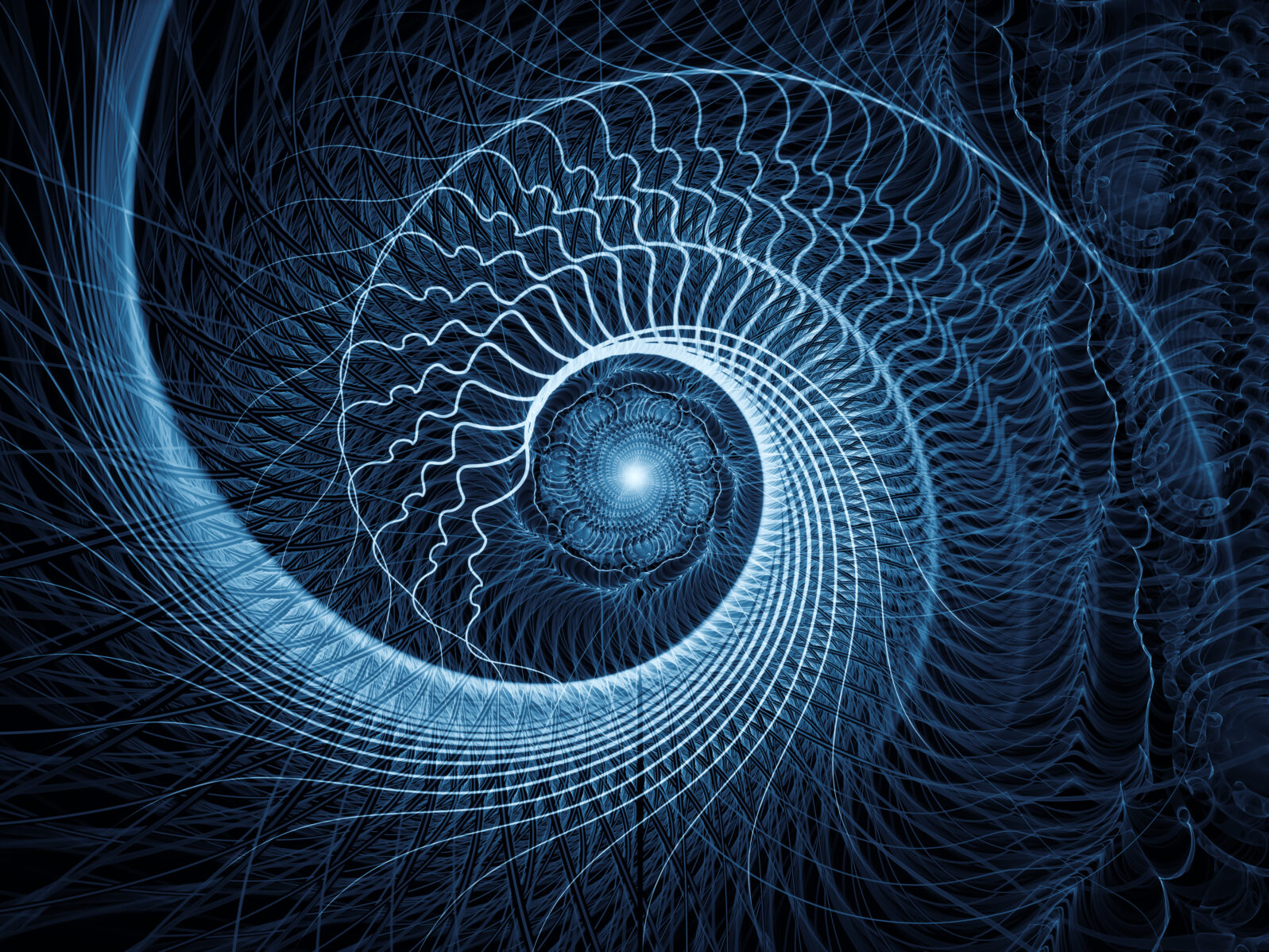Michael Egnor: What Happens to Our Consciousness After We Die?
Computer programmer and philosopher Bernardo Kastrup provides a surprising answerIn this week’s podcast, “Can Computers Think?”, Michael Egnor continued his discussion with philosopher and computer programmer Bernardo Kastrup. As a scientist, Bernardo has worked for The European Organization for Nuclear Research and for Phillips Research Laboratories, and has authored many academic papers and books.
This week, they look at a big question, “Will computers ever be conscious?”. But Egnor brought up an even bigger one: “What happens to our consciousness after we die?” As a scientist, Kastrup has worked for The European Organization for Nuclear Research and for Phillips Research Laboratories and has authored many academic papers and books. He is a leading advocate of cosmopsychism, the idea that intelligence did not randomly evolve somehow to help life forms survive. Rather, it is part of the structure of the universe and is present in different entities to varying degrees.
From the transcript: (Show Notes, Resources, a link to the complete transcript, and links to other discussions in the series follow.)
A big question…
Michael Egnor: Can computers think?

Bernardo Kastrup (pictured): I think it depends on what we mean by thought. If thought is merely functional data processing that enables some activity that’s useful, I think definitely computers can think—in the sense that they can process data, take decisions. And we are increasingly being confronted with the effectiveness of computers in doing precisely that, in processing more data than we can, and arriving at an uncannily intelligent, so to say, solutions to the problems they are posed with. So, from that perspective, I think artificial intelligence is not only a possibility, it’s a reality.
Now, if what we mean by thought is the content of consciousness, something it is like to have a thought… If this is how we define thought, then I would say with a very, very high degree of confidence, as a philosopher of mind, and as a computer engineer who has worked for years on artificial intelligence, that computers cannot think in that sense.
Computers are just tools. I know, as a computer engineer, that what I do with transistors, billions of transistors, I could do with water pipes, water and pressure valves. It would probably be something the size of the Earth, but there would be nothing more to it than water pipes, water and pressure valves. And I don’t think water pipes, water, and pressure valves are conscious in and of themselves. They are just material arrangements that process data and perform functions. But there is nothing it’s like to be an intelligent computer. Computers just simulate conscious in their life. They are not conscious in and of themselves anymore than a system of water pipes is conscious in and of itself.
Note: Kastrup’s view is in marked contrast to that of futurist Ray Kurzweil and many others. Kurzweil predicted computers with human-like common-sense intelligence by 2029 last year at COSM.
So far, artificial intelligence has not shown superior intelligence. Its value lies in its ability to crunch through huge amounts of data via massive computing power. Recently, the world’s second most powerful supercomputer, Summit, provided a hint to COVID-19 researchers that they should be looking at the possible role of a bradykinin storm, which leaves the doomed patient trying to breathe through a wall of something like Jell-o. It did this—not because it is smarter than medical researchers—but because it could power through 2.5 billion genetic combinations in a week and thus identify a previously unnoticed possibility.
In the same way, AI applications have recovered text from a burnt-up Biblical scroll (earliest surviving instance of Leviticus) and helped decipher ancient languages. It’s the same principle as with Summit: Human beings can see what to do in principle but don’t have the time. Automation confers calculating power but not creativity or consciousness.
There really was an experiment at Nokia to produce consciousness in machines. What happened?

Michael Egnor(pictured): I think of computation as the matching of an input to an output, according to an algorithm, without any semantic content. It’s purely a mechanical process. Whereas thought, I believe, is always intentional. I think every thought has an aboutness to it.
Note: “In philosophy, intentionality is the power of minds and mental states to be about, to represent, or to stand for, things, properties and states of affairs. To say of an individual’s mental states that they have intentionality is to say that they are mental representations or that they have contents.” – Stanford Encyclopedia of Philosophy
This concept is often called aboutness.”
Michael Egnor: And that is precisely what computation never has. It never has any intrinsic aboutness. The aboutness that computers have is imparted to them by the people who program the computer and the people who use the computer. But what do you think of that perspective?
Bernardo Kastrup: There is a researcher, Benti Heikkinen, from Finland who used to work at Nokia Research when Nokia was a very large dominating company some 15 years ago. And, sponsored by Nokia, he did a lot of work on trying to develop what he called conscious machines. And the way he went about it was precisely to tackle the point you just raised, the intentionality. And his idea was, instead of just encoding information about the outside world in binary numbers that have no intrinsic meaning (they are just arbitrary labels, arbitrary codes for things that come from the outside), what he thought of was to ground specific signals to specific qualities of the external world.

So, if there would be a camera looking at a fruit, there would be a signal for redness, there would be a signal for large, a signal for small, a signal for textured. There would be wires connected to each one of this possible combination of qualities represented in the camera image. And he would never mix these signals. So, he would preserve the semantic grounding throughout the internal data processing. And his idea was to tackle this issue of intentionality.
But I think he still failed because what we mean by conscious thought is not only a reference to something from the outside world that is preserved despite encoding. We mean more by that. We mean a felt comprehension of the data manipulation you’re doing. Even if you’re still preserving the grounding of your signals within that internal data processing, if there is no felt understanding of what’s happening, then there is no conscious thought. There is still only manipulation of signals. The fact that those signals are not arbitrarily encoded doesn’t change anything. It’s still just voltages, electrical potentials that go here up, and there they go down, and then back again. There is still no thought, I think. So, the issue is even more profound than you suggested because even if the problem you raised is tackled, I think, we still do not have artificial conscious thought.
And now a bigger question… if human consciousness is something different, does it die with the body? Or does it continue?
Michael Egnor: Do you believe in life after death?
Bernardo Kastrup: I certainly believe in consciousness after death. I believe that our core subjectivity, that implicit, innate sense of “I”-ness, remains undifferentiated. That’s the reason you still think you are the same person you were when you were five years old even though everything about you has changed. Every atom in your body has already departed, and new atoms are in. Your thoughts are different, your emotions are different, your memories are different. Everything is different about you, but your core subjectivity is the same. That’s why you think of that kid as you, even though everything else about that kid was different.
I think the same core subjectivity… it’s not only that it survives death, death happens within it. Life and death happen within that core subjectivity, that undifferentiated witness that is the carrier of all reality.
Michael Egnor: Do you believe that there is a reality to some aspects of near-death experiences?
Bernardo Kastrup: Yes, absolutely. I think one mistake that people make is to think of an after-death state as very analogous to the state in which we are now. Right now, we are in a state in which the outside world seems to be very objective in the sense that it’s not acquiescent at all to our own idiosyncrasies, to our preferences, to our favorite metaphors, to our memories, our life histories, our beliefs, our dispositions. The physical world seems to be very disconnected from that. We do not seem to be able to dress the physical world with the symbolic clothing that reflects our own personality and our own expectations, so to say.
And we think that everything that is real should follow this rule, this rule of strong objectivity. I think that’s a fallacy. It’s an implicit expectation that we have no reason to believe in, if we are talking about other states of consciousness that may apply after death. I think what you’re see in the NDE reports is that although the metaphors vary wildly, a Hindu may see Krishna, a Christian may see Christ, and it is not a coincidence that these words are so alike one another, there is a reason for that.

But anyway, the details and the metaphors may change a lot. Somebody may see a light, another may see Krishna, somebody else may see a dead relative. An atheist would probably see a dead relative because that’s the closest thing, the closest symbol of love for an atheist. But if you look past that symbolic layer, the after-death state seems to be very acquiescent to the reality perceived. There seems to be a reflection of ourselves, at least at the superficial layer. If you look past that idiosyncratic symbolic layer to the meaning that lies behind, I think you will find tremendous consistency across the NDE reports—a consistency of the basic fundamental architectural elements of that experience. And, to me, that means that it’s probably real in the sense that this is what awaits all of us. Even though it may be a realm that is not strongly objective, it may be a realm that we are able to dress up with the symbolic clothing that reflects our own idiosyncratic dispositions. But it wouldn’t be any less real because of it.
Note: Near-death experiences (NDEs) are a serious topic of research these days. See, for example,
➤ Newfound respect in science literature for near-death experiences For example, when people claim that they could see colors not normally available to humans, there is at least a possible science basis for that.
➤ Why medical scientists take near-death experiences seriously now Today, we know much more about what happens to people when they die—and what we are learning does not support materialism. Near-death experiences are generally seen as real, even among hardcore skeptics and research focuses on how to account for them.
Here are some other discussions between neurosurgeon Michael Egnor and philosopher and computer geek Bernardo Kastrup:
Bernardo Kastrup argues for a Universal Mind as a reasonable idea. The challenge, he says, is not why there is consciousness but why there are so many separate instances of consciousnesses. He tells Michael Egnor why his view, cosmopsychism, makes more sense than panpsychism.
Why consciousness couldn’t just evolve from the mud. Kastrup, a panpsychist, is sympathetic to the basic intuitions behind the idea that there is design in nature (intelligent design theory). Philosopher and computer scientist Bernardo Kastrup discusses the problems with such claims with neurosurgeon Michael Egnor.
and
Does physics today point to mind rather than matter only? A cosmopsychist looks at the universe, God, and free will. Bernardo Kastrup tells Michael Egnor that he does not think God is self-reflective. That, he thinks, is a unique job for humans.
Show Notes
- 00:38 | Introducing Dr. Bernardo Kastrup
- 01:12 | Can computers think?
- 03:34 | Intentionality
- 07:11 | Does the natural world have a person behind it?
- 10:34 | Consciousness after death
- 11:35 | Near-death experiences
- 15:01 | Is philosophy irrelevant?
Additional Resources
- Bernardo Kastrup’s website
- A Cognitive Approach to Conscious Machines by Pentti Haikonen at Amazon
- Arthur Schopenhauer at Encyclopædia Britannica
- The Experience of God by David Bentley Hart at Amazon
